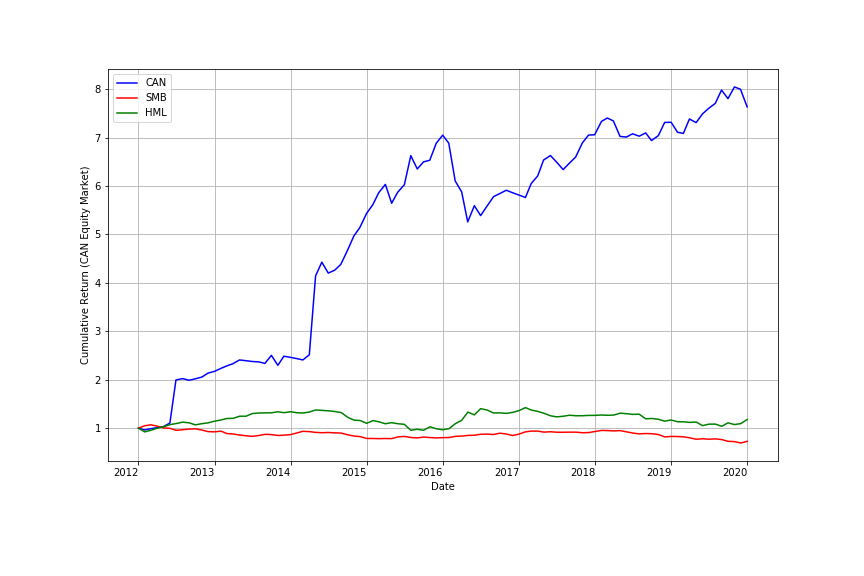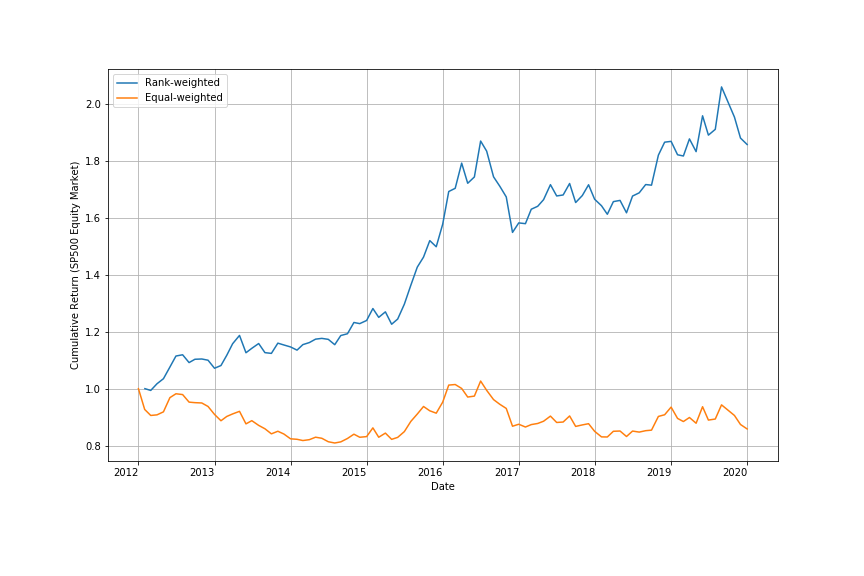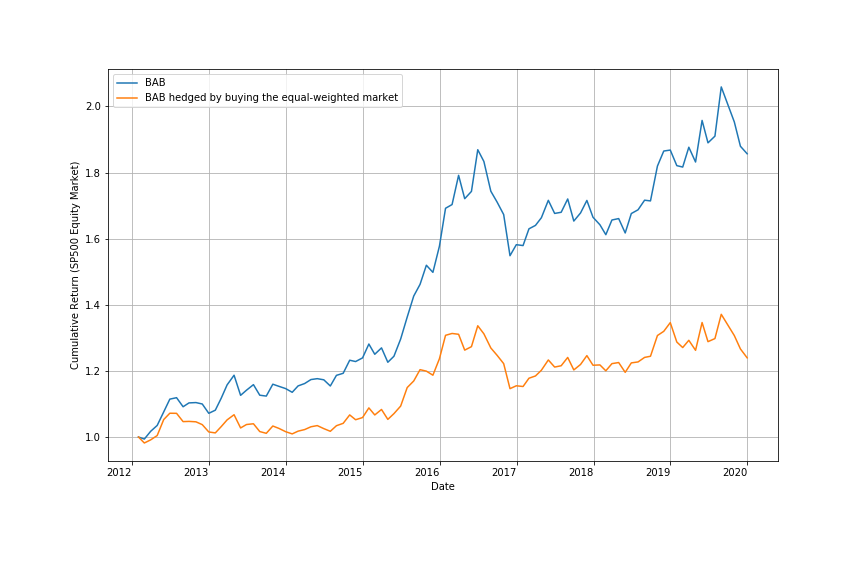✨_Originally forked from WenqiAngieWu's implementation._
This codebase is based upon the paper: Frazzini, A. & Pedersen, L. (2014). Betting against beta, available online here, which was covered by the Hudson & Thames quantitative finance research reading group. It seeks to implement the work discussed in the paper.
The Hudson & Thames reading group is a research group for finance professionals and enthusiasts to stay abreast of the latest developments in financial machine learning through curated reading materials and discussions with experts, enthusiasts, and peers.
-
Datafolder stores the fetched data andData.py. -
Data.pyconsists of 2 parts: save tickers, get data. Tickers are processed through website information, data are fetched using 'pandas-datareader'.
-
main.pycontains all the functions. -
figure.pyis for drawing plots.
The strategy was back-tested on SP500 stocks and TSX (Toronto Stock Exchange) stocks and compared with two other similar factors presented in the Fama French 3-factor model: one is the SMB (small minus big), the other is the HML (high minus low). (SMB and HML data are collected from Ken French’s data library
 Cumulative Return with $1 invested in the beginning in the SP500 (shown as US) equity market (in comparison with the SMB and HML factors)
Cumulative Return with $1 invested in the beginning in the SP500 (shown as US) equity market (in comparison with the SMB and HML factors)
 Cumulative Return with $1 invested in the beginning in the TSX (shown as CAN) equity market (in comparison with the SMB and HML factors)
Cumulative Return with $1 invested in the beginning in the TSX (shown as CAN) equity market (in comparison with the SMB and HML factors)
-
Trading cost: Looking at the actual weights the strategy puts on stocks with different market cap, we find out small-cap stocks are overweighted, causing significant implementation issues because the smallest stocks usually have limited capacity and are expensive to trade.
-
Set some threshold regarding the market capitalization when assigning weights
-
Mitigate risk using diversification
-
Explore the relationship between the strategy and market states, and refine it by incorporating the judgment of market trends into the strategy
- Andrea Frazzini and Lasse Heje Pedersen. Betting against beta. Journal of Financial Economics, 111(1):1–25, 2014

